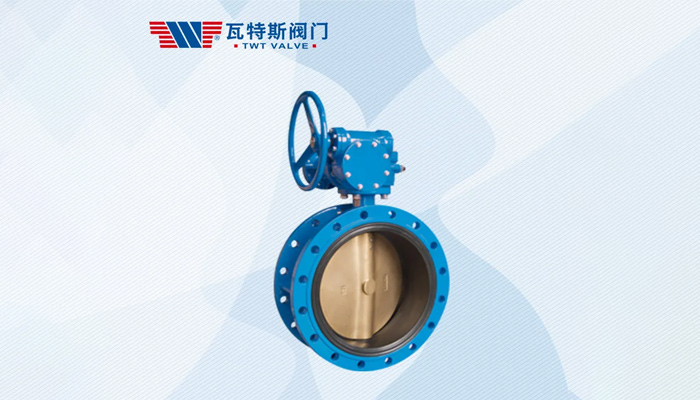Delve into key attributes of high-performance butterfly valves meticulously crafted to fulfill the stringent requirements of vital applications, emphasizing reliability, precise shut-off capabilities, and enduring durability.

Soft sealing butterfly valve
Design and Operation:
The valve consists of a disc, often referred to as the “butterfly,” positioned perpendicular to the flow direction. This disc is connected to a shaft, enabling rotation for flow regulation. Soft-sealing butterfly valves utilize a soft seal, typically made from rubber or elastomer, to ensure a tight shut-off and minimize the possibility of leakage.
Applications:
These valves find use in various industries:
- Chemical Processing: Demonstrates exceptional resistance against corrosive fluids.
- Water Treatment: Frequently employed to regulate water flow within treatment facilities and distribution networks.
- HVAC Systems: Manages air and water flow within heating, ventilation, and air conditioning setups.
- Food and Beverage: Incorporates a hygienic design tailored to the requirements of the food industry.
- Power Generation: Exercises control over water, steam, and various fluids within power plant environments.
Advantages:
- Cost-effective: Generally more affordable than other valve types.
- Compact design: Lightweight and easy to install.
- Quick operation: Quarter-turn action enables fast opening and closing.
- Tight shut-off: Soft sealing ensures minimal leakage.
- Low maintenance: Simple design with fewer components and long service life.
When selecting a soft sealing butterfly valve, consider factors such as operating conditions, size, and flow capacity to ensure optimal performance.
Double flanged butterfly valve
Design and Operation:
The valve comprises a disc, commonly known as the “butterfly,” affixed to a valve stem. This stem extends through the valve body and links to an actuator or handle. Upon turning the actuator or handle, the disc rotates, either permitting or obstructing the flow. Its double-flanged design entails flanges welded to both the inlet and outlet ends of the valve body.
Applications:
These valves are frequently employed to control, regulate, and throttle the flow in diverse applications across industries such as water treatment, chemical processing, and HVAC systems.
Advantages:
- Resilient Seating: The double-flanged design ensures a tight seal, making it suitable for dead-end service.
- Easy Installation: The flanges allow straightforward connection to pipelines with matching flange sizes.
Remember, double-flanged butterfly valves are versatile and reliable components used in fluid systems for efficient flow control.
Double offset butterfly valve
Design and Operation:
A double-offset butterfly valve is designed with two key offsets compared to the concentric type:
- First Offset: The shaft is not centered on the disc but positioned slightly behind it. This arrangement creates a continuous sealing surface on the disc.
- Second Offset: The shaft is not aligned with the pipe centerline but is slightly to the right of the center. When fully open, the valve doesn’t touch the seat at all. This reduces friction compared to concentric valves and prolongs the seat’s lifetime. The 90° rotation of the disc ensures efficient flow control.
Double-offset valves are used in systems requiring higher pressure resistance.
Applications:
- Oil and Gas Industry:
Control flow in pipelines, tank farms, and refineries.
Handle crude oil, natural gas, and other hydrocarbons.
- Power Plants:
Used in cooling water systems, steam lines, and fuel handling.
Resistant to high temperatures and pressure fluctuations.
- HVAC Systems:
Regulate air and water flow in heating, ventilation, and air conditioning systems.
Efficient for maintaining comfort levels.
- Food and Beverage Industry:
Handle food-grade liquids in breweries, dairies, and beverage production.
- Marine and Shipbuilding:
Installed in ballast systems, cooling circuits, and fuel lines.
Resistant to saltwater and marine environments.
Resistant to chemicals and pulp slurries.
- Steel and Metal Processing:
Handle high-temperature gases and molten metals in steel mills and foundries45.
Advantages:
- Higher Pressure Resistance: Double-offset valves offer up to a Class 600 ANSI rating in materials like stainless steel, carbon steel, and Hastelloy.
- Reduced Operating Torque: Easier to open and close due to lower torque requirements.
- Increased Flow Capacity: Boasts better flow capacity compared to other valve types.
- Ease of Cleaning: Much easier to clean than gate valves, improving worker efficiency.
- Compact and Lightweight: Weigh less and occupy less space than other valve types.
- Longevity and Durability: Suitable for extreme conditions, such as gas pipelines and offshore oil rigs. Adds longevity to different systems and reduces maintenance tasks